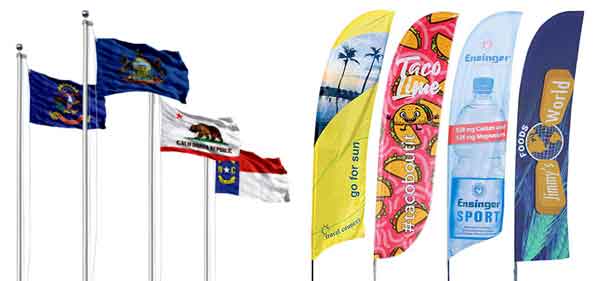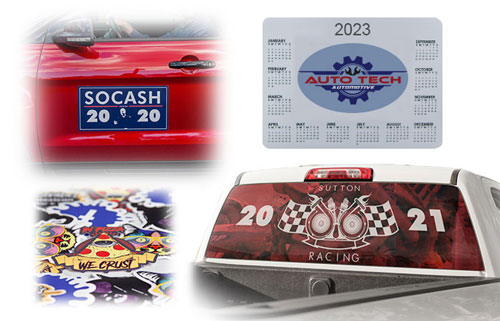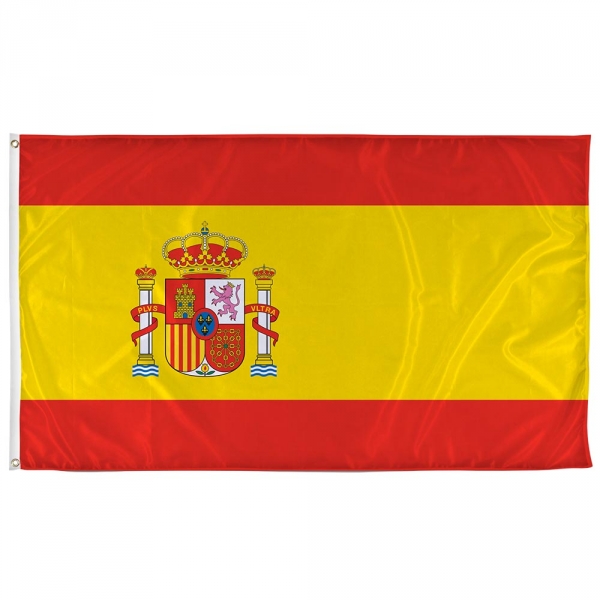Spain Flag
Table of Contents
- Overview
- Assembly Instructions
- Videos
- Reviews
- Q & A
Spain Flag Details
Showcase for love for Spain with a well-made, long-lasting Spanish flag for sale. These flags were designed for indoor and outdoor setup due to the durable print, material, and optional hardware. We print the flag using a state-of-the-art dye sublimation technique, which ingrains the ink into the fabric. This prevents the print from scratching or peeling off the fabric. We print on one side of the material and the reverse image bleeds through to the other side of the fabric, resulting in lower printing costs. The fabric is an outdoor-tested knitted polyester, which is both tear and fray-resistant to handle all kinds of weather. Easily assemble Spain’s flag on a pole set by adding on either a handheld or wall mounted pole set to your order. The flag is installed on the order with the grommet finishing on the side. These flags are great for a variety of settings, such as in front of your home, an office, a storefront, and much more.
Parts List:
- Pre-printed flag
- Optional flagpole of your choice
Material:
- Outdoor Flag Polyester: Tear-resistant lightweight knitted fabric with excellent thru-print (3.25oz/yd²)
Specifications
| Model | Part Number | Size | Weight | Includes |
|---|---|---|---|---|
| 5x3 Flag Only | DI8120 | 5ft x 3ft | 0.4lbs | Pre-printed flag |
| Flag & Hand-Held Flagpole | DI0650 | 6ft | 2.1lbs | Pre-printed flag Tangle-free aluminum flagpole Removable black handle |
| Flag & Wall-Mounted Flagpole | DI0653 | 6ft | 2.9lbs | Pre-printed flag Tangle-free aluminum flagpole Removable black handle 180° adjustable wall mount |
Spanish Flag History
Before Spain had a flag, they used royal shields, which incorporated the colors associated with the current flag of Spain. Medieval kingdoms had their own separate flags and coat of arms. The Cross of Burgundy became Spain’s primary symbol in the 1400s when Joanna of Castile married Philip the Handsome, who was the Duke of Burgundy. In the 16th century, the Habsburg house took the throne of Spain, the Cross of Burgundy was often incorporated in military flags. A new ensign was created in the 1700s and added to the Cross of Burgundy, but the use of the Cross of Burgundy ended in the late 1700s when Charles III took the throne. The shield of the royal arms was revised, as were the colors of the flag to differentiate Spain’s from other countries, which often included white in their flags. From several sketches, Charles III chose a red and yellow design with the war ensign, which distinguished the Spain flag from other European flags. During the Second Spanish Republic in the 1930s, a tricolor flag was used instead with an added purple color and different ensigns were also used under Franco. The former 1785 design was again established in 1981 after the death of Franco with the restoration of the House of Bourbon to the Spanish throne.
Spain Flag Meaning and Colors
Red: The flag from the Kingdom of Aragon included red and yellow colors, which could have influenced the current design of the Spanish flag, though this has never been proven. The color was also used in the Crown of Castile. The current flag is known as La Rojigualda, aka red-weld.
Yellow: This is another color from the Crown of Aragon that could have inspired the modern design of the flag. The Crown of Castile also incorporated a red/yellow color scheme.
Coat of Arms: Spain’s coat of arms incorporates several symbols of Spanish kingdoms from the centuries. The shield in the coat of arms incorporates the arms from the Kingdom of Castile, the Kingdom of León, the Crown of Aragon, and the Kingdom of Navarre. The pomegranate at the bottom was from the Kingdom of Granada. The fleur-de-lis design in the center of the shield came from the House of Bourbon. The pillars on the side and the motto “Plus Ultra”, meaning “further beyond” in Latin, came from the Pillars of Hercules. This was a nickname given to the Strait of Gibraltar. Finally, the large crown on the top is the Spanish Royal Crown.
Sources:
- Flag of Spain
https://en.wikipedia.org/wiki/Flag_of_Spain - Coat of Arms of Spain
https://en.wikipedia.org/wiki/Coat_of_arms_of_Spain - The State Symbols of Spain
https://www.lamoncloa.gob.es/lang/en/espana/statesymbols/Paginas/index.aspx
 Click here for Proposition 65 warning
Click here for Proposition 65 warning














































